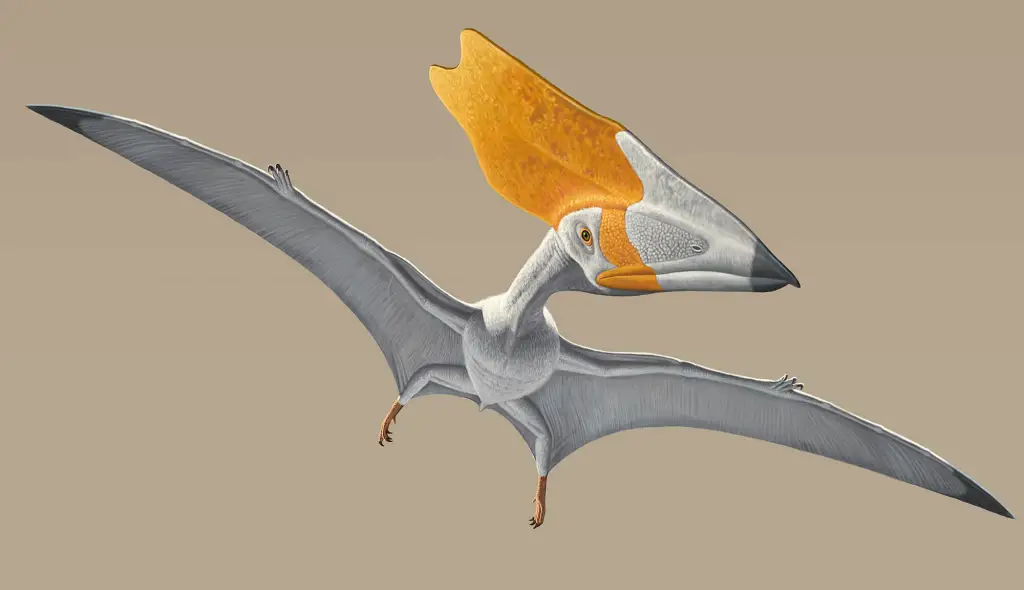Unraveling the Secrets of Pterosaur Tails

Pterosaurs, the flying reptiles of the dinosaur era, were remarkable creatures that soared through ancient skies. Recent research has shed light on the sophisticated tensioning systems found in their long tails. These systems played a crucial role in enhancing flight efficiency and stability. The study, which utilized advanced laser technology, has provided new insights into the structural mechanisms that allowed these prehistoric animals to navigate their environment. This article delves into the findings of this research, exploring the structural features of pterosaur tails, their dual purposes, and the evolutionary adaptations that shaped these fascinating creatures.
Structural Findings in Tail Vanes
A groundbreaking study published in eLife has revealed the intricate internal structures of early pterosaur tail vanes. Researchers discovered that these vanes were supported by a network of criss-crossing fibers and tube-like structures. This unique configuration acted as a tensioning system, similar to the sails of a ship. When wind pressure was applied, the vanes stiffened, enhancing their aerodynamic properties.
To uncover these details, scientists employed laser-stimulated fluorescence to examine fossils. This innovative technique allowed them to visualize the internal architecture of the vanes, which had remained hidden for millions of years. Natalia Jagielska, a curator at Lyme Regis Museum, expressed her admiration for the ability to reconstruct such complex details from ancient fossils. The findings suggest that the structural integrity of these vanes was vital for flight, as any lack of stiffness could have severely compromised their ability to soar.
The research highlights the advanced adaptations of early pterosaurs, showcasing their evolutionary ingenuity. By understanding the structural mechanisms behind their flight, paleontologists can gain a deeper appreciation for how these creatures thrived in their prehistoric ecosystems.
Dual Purpose of Pterosaur Tails
The study also revealed that the tensioning system in pterosaur tails served a dual purpose. While it primarily supported flight, it likely played a significant role in social behaviors, such as mate attraction. Researchers noted that the functionality of these tails extended beyond mere aerodynamics. The ability to display vibrant and dynamic tail movements could have been crucial for attracting mates and establishing dominance among peers.
David Martill, an emeritus professor at the University of Portsmouth, praised the innovative approach taken by the researchers. He emphasized that understanding the behavioral aspects of pterosaur tails adds another layer of complexity to our knowledge of these ancient creatures. The tails were not just tools for flight; they were also instruments of communication and display.
This dual functionality illustrates how evolutionary pressures shaped the development of pterosaur tails. As these creatures adapted to their environments, their tails became essential for both survival and social interaction. This insight enriches our understanding of the behavioral repertoire of pterosaurs, revealing a more nuanced picture of their lives.
Evolutionary Adaptations Over Time
Pterosaurs first appeared during the Triassic Period, characterized by long tails that provided stability in flight. However, as they evolved into the Jurassic era, many species, particularly the Pterodactyloidea group, developed shorter tails. This evolutionary shift likely enhanced their flight maneuverability, allowing them to navigate more effectively through the air.
David Martill pointed out that while long tails could hinder flight performance, they also added visual appeal. He drew a parallel to the peacock, whose extravagant tail feathers serve both aesthetic and practical purposes. The evolution of pterosaur tails reflects a balance between functionality and attractiveness, showcasing the complexity of natural selection.
The study emphasizes how evolutionary traits in early pterosaurs were shaped by both practical needs and aesthetic considerations. As these creatures adapted to their environments, their tails evolved to meet the demands of flight while also serving social functions. This intricate interplay between form and function highlights the dynamic nature of evolution and the diverse strategies employed by prehistoric animals to thrive in their ecosystems.
Observer Voice is the one stop site for National, International news, Sports, Editor’s Choice, Art/culture contents, Quotes and much more. We also cover historical contents. Historical contents includes World History, Indian History, and what happened today. The website also covers Entertainment across the India and World.

